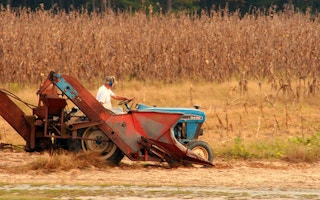For the first time, the 2016 World Economic Forum’s global risks report ranks the failure of climate change mitigation and adaptation as the most impactful risk to countries and industries, with water crises coming third.
Agriculture is undoubtedly one of the most climate-sensitive sectors. The Fifth Assessment Report of the Intergovernmental Panel on Climate Change (IPCC) showed that climatic changes over the last 30 years have already reduced global agricultural production in the range of 1–5 per cent, and that extreme weather events affecting major agricultural producers have helped to drive global food price volatility in recent years.

Farming emissions come from a variety of sources that differ depending on the type of farm. Image: IPCC
Cimate change is a major threat to the global food system
The report confirms that developing countries will continue to be hit hardest as climate change gathers pace – the very same countries from which many food and beverage companies source their raw ingredients. For example:
- In Vietnam, rice production has decreased because of saline intrusion in the soil due to rising sea levels.
- In West African countries in or near the Sahel, decreases in growing areas are projected for 70 per cent of crops by 2050, and by more than 50 per cent in the case of bananas, maize and beans.
- In Nicaragua, climate change has contributed to stagnating yields for maize and beans, while drought and heavy rain have led to crop losses.
Across the world, farmers face decreasing yields and need larger areas for production, forcing the price of commodities to rise. A new study on the Brazilian state of Mato Grosso, which as of 2013 supplied 10 per cent of the world’s soybeans, found that a temperature increase of 1°C will lead to a 9–13 per cent decrease in soy and maize production, largely due to farmers putting less land into production or only planting one crop at a time.
The IPCC Fifth Assessment Report showed that climate changes over the past 30 years have already reduced global agricultural production in the range of 1–5 per cent.
Higher temperatures will increase heat stress among livestock and, where combined with decreases in precipitation, will reduce the amount of water available for irrigation. The increase in the frequency and/or severity of extreme weather events will be particularly damaging to smallscale farmers and people living in or at risk of poverty, because they generally lack access to social safety nets.
Price volatility is especially damaging to small-scale food producers, whether prices are too low when harvests are good or too high in times of scarcity and when disaster strikes. Any decreases in production in such circumstances affect both levels of income and food consumption.
Oxfam’s experience shows that when farmers lose income they often resort to selling assets such as livestock, taking children out of school or cutting down on medical expenses. Without a safety net, small-scale farmers and their families lose the ability to achieve a decent livelihood or invest in their farm’s future, and are more likely to experience malnutrition and hunger.
Women farmers are more vulnerable to climate change impacts than men because they are often more dependent on climate-sensitive livelihoods such as rainfed agriculture and collecting water for household use. They also have unequal access to productive resources such as land and agricultural inputs, and have less of a support system to fall back on in times of crisis.
In countries where a significant proportion of household budgets are spent on food and many people are dependent on agriculture, the social and economic consequences of climate-related production changes and price shocks can have disastrous implications for the wider economy.
These increased risks faced by small-scale food producers are increasingly reflected in the bottom lines of the world’s biggest food and beverage companies too. For example, in 2010 – a year of extreme weather in many parts of the world – several companies experienced production shocks and financial losses that could be attributed to the changing climate:
- Fresh Del Monte Produce Inc. faced a $9m loss due to heavy rains and flooding in Guatemala, which affected banana production.
- The global commodity trading firm Bunge reported a $56m loss in its sugar and bioenergy business due to drought.
- Severe droughts in Russia led the country to ban wheat exports, which created a disastrous ripple across global stock markets and prompted a 2.2 per cent drop in the share price of General Mills.
Suhardiyoto Haryadi is a professor of foresry at the Center for Biodiversity and Tropical Forest Rehabilitation, Bogor Agricultural University (IPB).
This article was published with permission from Ecosystem Marketplace. Read the full story.








